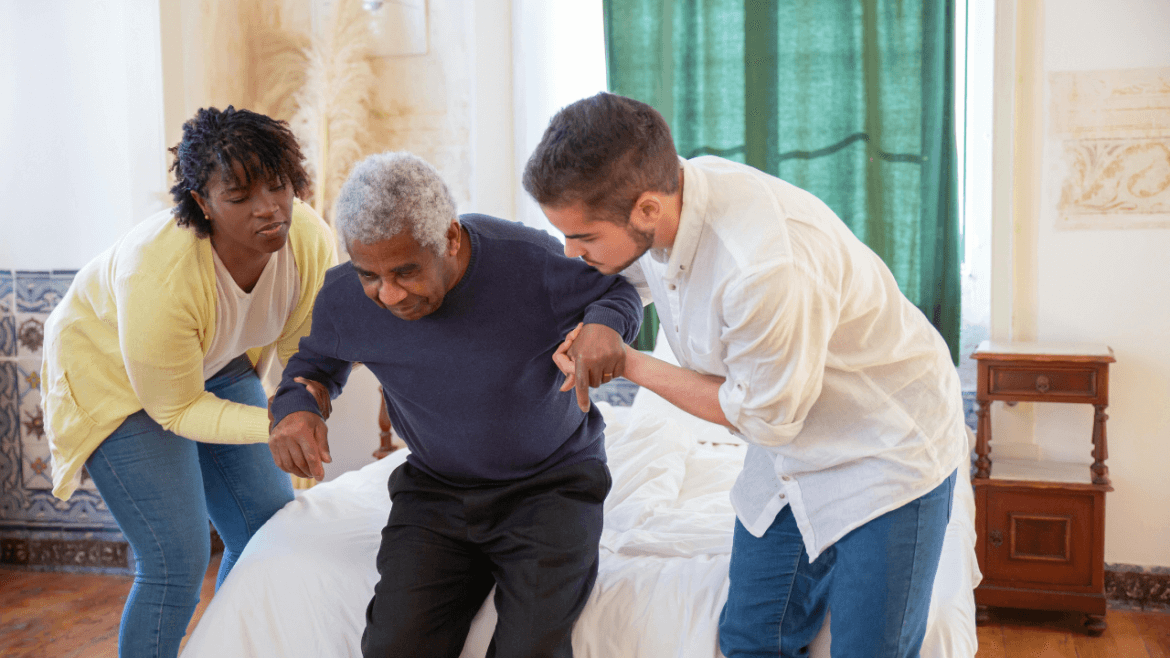Did you know that Leading Edge Senior Care has a Dementia Support Group? We meet monthly in Mesa. For more details <click here>
Things You Should Never Do To a Diabetic Senior’s Feet
The feet of diabetic seniors deserve meticulous care. Diabetes can lead to complications like nerve damage and poor circulation, increasing the risk of foot injuries and infections.
While many caregivers aim to help, unintentional mistakes can cause harm. Understanding what to avoid is crucial to safeguarding their well-being.
Never Ignore Foot Pain or Changes
Ignoring discomfort, swelling, or discoloration in a diabetic senior’s feet can lead to serious consequences. Many older adults with diabetes experience neuropathy, which masks pain, making it difficult to detect injuries.
If left unaddressed, small issues can evolve into ulcers or infections. When seniors mention even minor foot pain, take it seriously. Regularly check for blisters, redness, or unusual marks. Early intervention can prevent severe complications.
Don’t Attempt DIY Corn or Callus Removal
Seniors often develop corns or calluses, but handling them without professional guidance can cause harm. Using sharp tools or harsh chemicals to remove them increases the risk of cuts, infections, and further complications.
Diabetic seniors have more sensitive skin and compromised healing ability, making even minor injuries dangerous. Always consult a podiatrist for proper treatment.
Never Allow Feet to Remain Wet or Damp
Moisture trapped between toes can create the perfect environment for fungal infections. Seniors may not always notice dampness, especially after bathing or sweating.
Gently dry their feet, paying special attention to the spaces between toes. Consider using moisture-wicking socks to keep feet dry throughout the day. Preventing infections starts with maintaining a clean and dry environment.
Don’t Cut Toenails Incorrectly
Trimming toenails may seem simple, but improper cuts can lead to ingrown nails and infections. Avoid cutting nails too short or rounding the edges.
Always trim them straight across and use sanitized tools. If the senior’s nails are thick or difficult to manage, seek assistance from a podiatrist. Safe grooming practices minimize risks and promote healthy feet.
Avoid Tight or Ill-Fitting Shoes
Shoes that don’t fit properly can cause blisters, pressure sores, or restricted blood flow. Diabetic seniors need footwear that provides support without causing friction. Avoid high heels, narrow-toed shoes, or materials that don’t allow for breathability.
Look for shoes specifically designed for diabetic feet, as they offer cushioning and protection. Comfort and fit are essential for daily wear.
Never Overlook Proper Temperature Checks
Diabetic seniors may have reduced sensation, which can make them unaware of extreme temperatures. Exposing their feet to overly hot or cold surfaces can result in burns or frostbite.
Always test bathwater or heating pads before use. Protect their feet from walking barefoot on hot pavement or cold floors. Maintaining a safe temperature is vital for preventing unnecessary injuries.
Don’t Skip Daily Foot Inspections
Regular inspections are the foundation of diabetic foot care. Seniors may not always notice small injuries, so caregivers should perform daily checks.
Look for cuts, bruises, swelling, or signs of infection. A handheld mirror can help examine the soles of their feet. Consistent monitoring ensures early detection of issues and timely treatment.
Avoid Walking Barefoot
Walking barefoot increases the risk of cuts, punctures, and infections. Diabetic seniors should always wear shoes or protective footwear, even indoors.
Socks with non-slip grips can provide additional safety and comfort. Protection minimizes exposure to injuries that may go unnoticed.
Never Delay Seeking Professional Help
When issues arise, delaying medical attention can have devastating consequences. Diabetic seniors are more vulnerable to infections and complications that progress quickly.
If you notice signs of infection, non-healing wounds, or significant changes in their feet, consult a healthcare provider immediately. Timely intervention can save their mobility and, in some cases, their lives.
Transitioning to Safer Foot Care Practices
Caring for diabetic seniors’ feet requires a proactive and gentle approach. Transitioning to safer practices involves educating both seniors and caregivers about the risks associated with improper care.
Start by implementing a routine that prioritizes cleanliness, regular inspections, and professional checkups. Open communication about their comfort and concerns can also improve outcomes.
Emotional and Physical Impacts of Proper Foot Care
Taking care of diabetic seniors’ feet goes beyond physical health. It promotes confidence, mobility, and independence. When seniors feel secure about their foot health, they are more likely to stay active and engage in social activities. This emotional boost contributes to their overall well-being.
By avoiding harmful practices and adopting preventive measures, you can protect diabetic seniors from unnecessary pain and complications. Their feet carry them through life’s journey—treating them with care ensures they remain strong for the path ahead.

